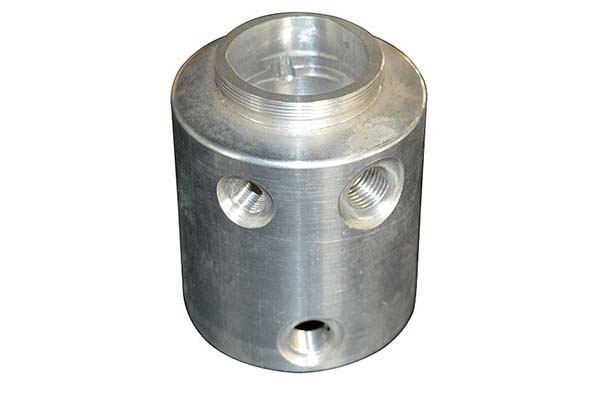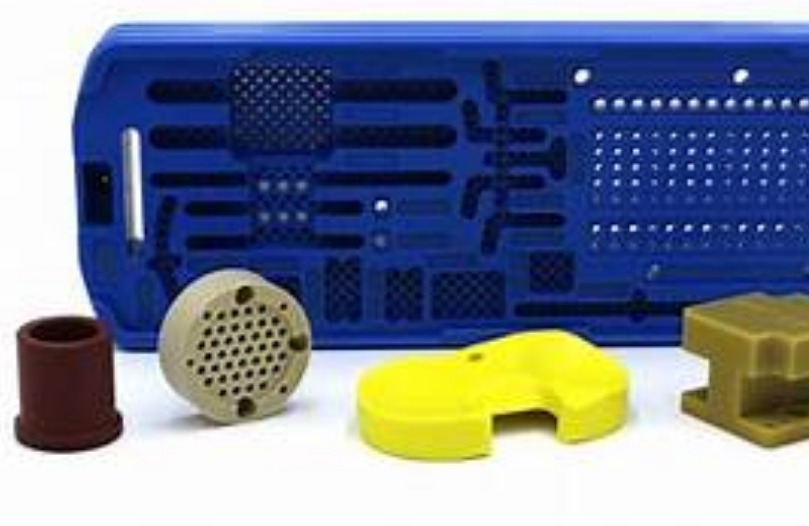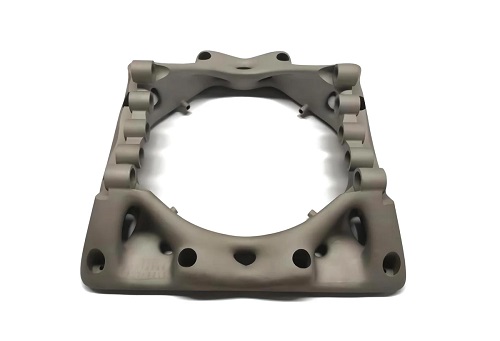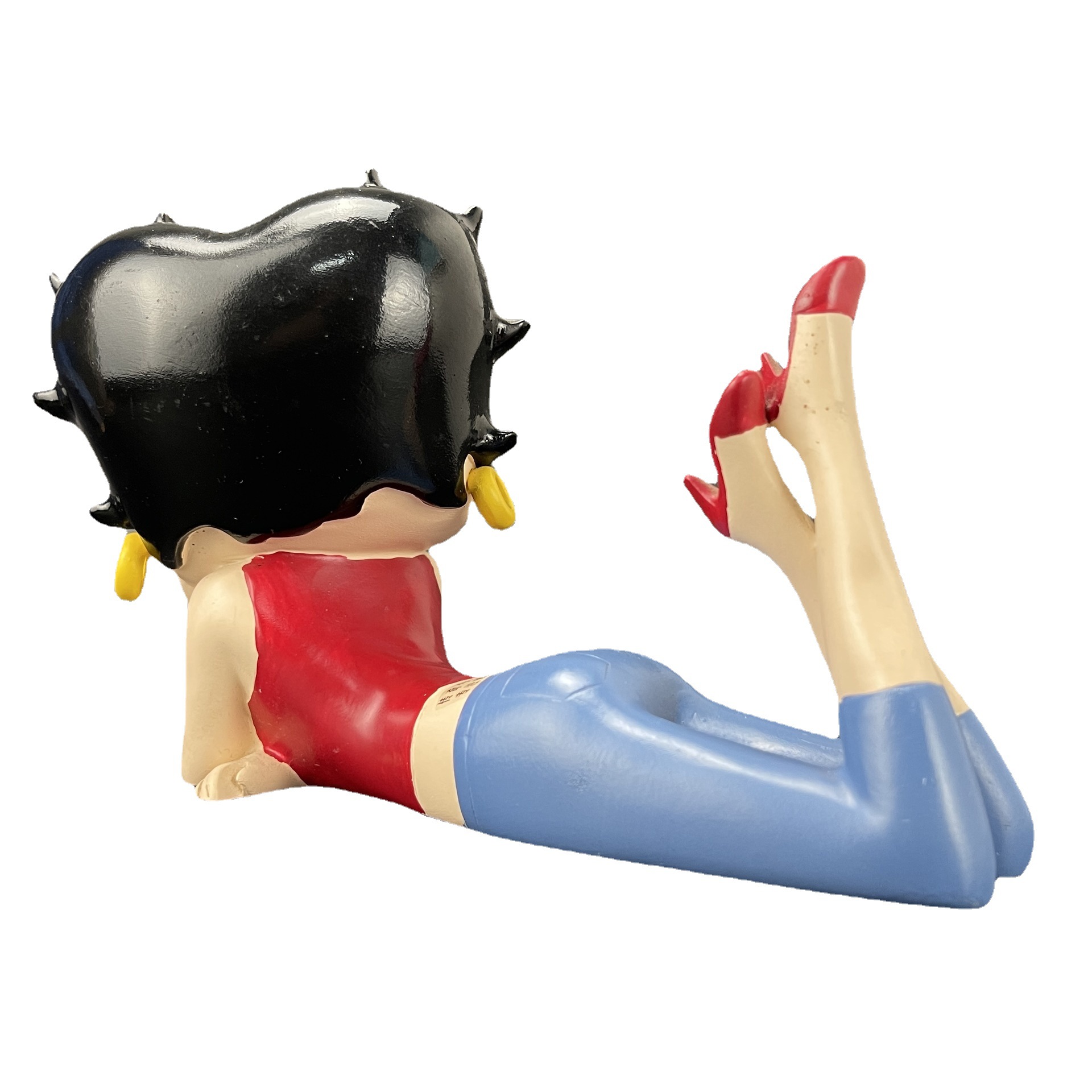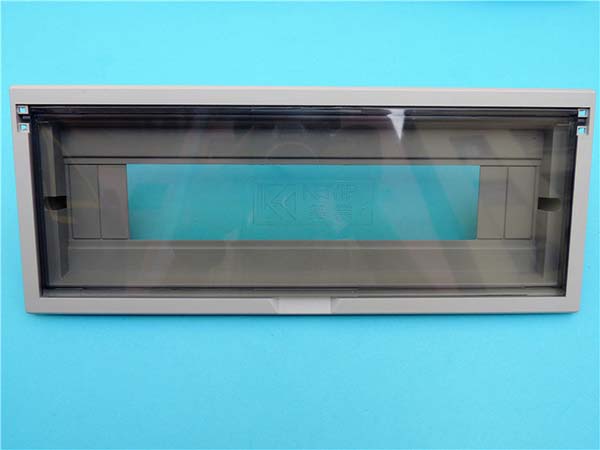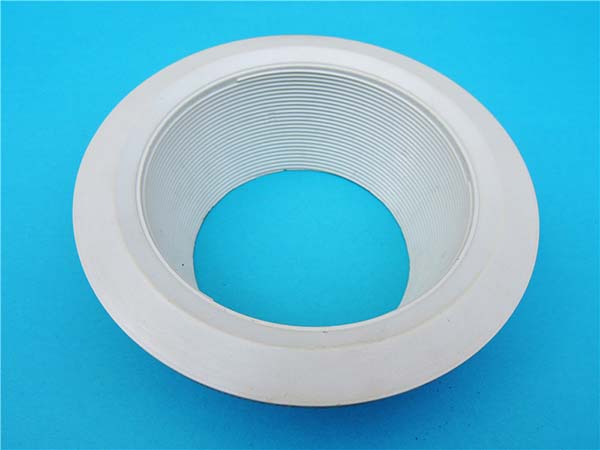Introduction to SLS 3D Printing
Definition and Basic Principle
SLS 3D printing, short for Selective Laser Sintering 3D printing, is an advanced additive manufacturing technology. At its core, it operates on the principle of using a high - power laser as the energy source to sinter powdered materials, gradually building up a three - dimensional object layer by layer.
For Yigu Technology example, in the manufacturing of a complex metal gear, the SLS 3D printer first spreads a layer of metal powder. The laser then traces the gear's cross - sectional shape for that layer, sintering the powder into a solid shape. After multiple layers are added, the gear takes shape, with teeth, hubs, and other features accurately replicated from the digital model.
The Key Role of SLS in Metallic 3D Printing
SLS holds a pivotal position in the realm of metallic 3D printing. It has become an indispensable technology for several reasons, especially when compared to traditional manufacturing methods and other 3D printing techniques.
When compared to other 3D printing technologies for metals, such as Direct Metal Laser Melting (DMLM), SLS offers different advantages. While DMLM can produce fully dense metal parts with excellent mechanical properties, SLS is often more suitable for applications where the final part does not require absolute density. SLS can be faster and more cost - effective for creating prototypes or parts with a certain porosity tolerance. The following Yigu Technology table summarizes some of the key differences between SLS and DMLM for metallic 3D printing:
| Feature | SLS | DMLM |
| Part Density | Can produce parts with controlled porosity, typically not fully dense | Produces fully dense parts |
| Build Speed | Generally faster for large - scale or less - dense parts | Slower, especially for large parts |
| Material Cost | Powder can be reused, potentially lower material cost in the long run | Higher material cost as more precise control of melting is required |
| Mechanical Properties | Good for non - critical mechanical applications or where some porosity is acceptable | Excellent mechanical properties, suitable for high - stress applications |
| Application | Prototyping, parts with internal structures, non - highly - stressed components | Aerospace components, high - performance automotive parts, medical implants |
In Yigu Technology summary, SLS plays a crucial role in metallic 3D printing, offering unique capabilities in terms of design freedom, material efficiency, and cost - effectiveness for a wide range of applications. Its position in the field is further strengthened by continuous technological advancements, which are expanding its potential uses and improving the quality of the printed metallic products.
The SLS 3D Printing Process for Metals
Powder Preparation
The quality and characteristics of the metal powder used in SLS 3D printing play a crucial role in determining the final properties of the printed parts. Metal powders for SLS typically have a particle size distribution in the range of 10 - 100 micrometers. A narrow particle size distribution is preferred as it ensures more uniform packing of the powder in the powder bed, which in turn leads to more consistent sintering and better - quality parts.
For Yigu Technology example, titanium alloy powder (such as Ti6Al4V) is widely used in aerospace applications due to its high strength - to - weight ratio and excellent corrosion resistance. The powder should have a smooth surface and a spherical or near - spherical shape to promote good flowability during the powder - spreading process. Spherical particles can roll easily over each other, allowing for a more even distribution of the powder layer. In contrast, irregularly shaped particles may cause uneven powder layers, which can result in defects in the final part.
Before the printing process, the metal powder often requires some pre - treatment steps. One common pre - treatment is drying. Moisture in the powder can cause issues during sintering, such as the formation of voids or cracks in the printed part due to the sudden vaporization of water during laser heating. Drying is usually carried out in an oven at a temperature specific to the powder material, typically in the range of 80 - 150°C for several hours, depending on the powder type and the amount of moisture present.
Another important pre - treatment is sieving. Sieving helps to remove any agglomerates or oversized particles that may be present in the powder. Agglomerates can prevent proper powder spreading and lead to inconsistent sintering. A sieve with a mesh size slightly smaller than the maximum desired particle size is used to ensure that only particles within the acceptable size range are used in the printing process.
Different metal powders have specific applicable scenarios. Stainless steel powder (e.g., SS316L) is popular in the medical and food - processing industries because of its excellent corrosion resistance. In the medical field, it can be used to print surgical instruments and implantable devices. Aluminum alloy powder (such as AlSi10Mg) is favored in the automotive and aerospace industries for its low density and good thermal conductivity. It is often used to manufacture lightweight components like engine parts and aircraft structural elements, where reducing weight while maintaining sufficient strength is crucial.
Laser Sintering Operation
Once the powder is prepared, the laser sintering operation begins. The first step in this process is to set the appropriate laser parameters. The laser power is a critical parameter. For metal powders, the laser power typically ranges from 100 - 500 watts, depending on the powder material and the desired sintering depth. Higher laser powers can lead to faster sintering but also increase the risk of over - heating, which may cause warping, cracking, or excessive porosity in the printed part.
The following table summarizes the main post - processing steps and their effects on metal parts produced by SLS 3D printing:
| Post - Processing Step | Main Effect | Typical Temperature/Process Details |
| Heat Treatment (Annealing) | Relieves internal stress, improves ductility and corrosion resistance | 600 - 1000°C for steel, slow cooling |
| Heat Treatment (Solution Heat Treatment + Quenching + Aging for Al Alloys) | Increases strength and hardness | Specific temperatures and time - temperature profiles depending on the alloy |
| Sandblasting | Removes powder, smooths surface, improves fatigue strength | High - speed stream of abrasive particles |
| Polishing (Mechanical) | Achieves high - gloss finish | Using abrasive wheels with different grit sizes |
| Polishing (Chemical - Mechanical) | Achieves extremely smooth surface | Combination of chemical and mechanical processes |
| Machining | Achieves tight tolerances, adds features | Varies depending on the machining operation (e.g., drilling, milling) |
In conclusion, post - processing steps are essential for enhancing the performance and quality of metal parts produced by SLS 3D printing, enabling them to meet the requirements of a wide range of applications.
Materials Used in SLS 3D Printing for Metallic Products
Common Metal Powders
The following Yigu Technology table summarizes the key properties of these common metal powders:
| Metal Powder | Density (g/cm³) | Tensile Strength (MPa) | Melting Point (°C) | Key Applications |
| SS316L | Around 8.0 | 485 - 620 | 1375 - 1400 | Medical instruments, food - processing equipment |
| Ti6Al4V | Around 4.43 | 900 - 1100 | 1600 - 1650 | Aerospace engine parts, medical implants |
| AlSi10Mg | Around 2.6 - 2.7 | 200 - 300 | 570 - 630 | Automotive engine parts, aerospace non - critical components, heat sinks |
Composite Materials
- Metal - Matrix Composites (MMCs) in SLS 3D Printing
- Advantages
- Enhanced Mechanical Properties: One of the primary advantages of using metal - matrix composites in SLS 3D printing is the significant improvement in mechanical properties. For example, when carbon fibers are added to a metal matrix (such as aluminum), the resulting composite can have a much higher tensile strength and stiffness. Carbon - fiber - reinforced aluminum composites can have a tensile strength that is 30 - 50% higher than pure aluminum, depending on the fiber content and orientation. This makes them suitable for applications where high - strength materials are required, such as in the aerospace and automotive industries for components like aircraft wings and high - performance car chassis parts.
- Tailored Thermal Properties: MMCs can also be designed to have specific thermal properties. For instance, adding ceramic particles (such as silicon carbide, SiC) to a metal matrix can increase the composite's thermal stability and reduce its coefficient of thermal expansion. In electronic packaging applications, this is highly beneficial as it helps to prevent thermal - induced stress and damage to the components. The thermal conductivity of the composite can also be adjusted by choosing the appropriate reinforcement material and volume fraction, enabling better heat dissipation in devices like high - power electronics.
- Challenges
- Powder Compatibility and Homogeneity: Ensuring the compatibility between the metal matrix powder and the reinforcement material (such as fibers or particles) is a major challenge. In some cases, the reinforcement may not disperse evenly in the metal powder, leading to non - uniform properties in the final printed part. For example, in the case of carbon - fiber - reinforced metal composites, the carbon fibers may agglomerate during the powder - mixing process, which can cause weak points in the printed structure. Specialized powder - mixing techniques and surface treatments of the reinforcement materials are often required to improve their dispersion and compatibility with the metal powder.
- Processing Complexity: The SLS 3D - printing process for MMCs is more complex compared to pure metal powders. The reinforcement materials may have different melting points, thermal expansion coefficients, and sintering behaviors than the metal matrix. This requires careful adjustment of the laser parameters, such as power, scanning speed, and powder - bed temperature. For example, if the laser power is too high, it may cause the reinforcement material to burn or degrade, while if it is too low, the composite may not sinter properly, resulting in a weak and porous structure. Additionally, the post - processing of MMCs can be more challenging, as the presence of the reinforcement may affect the effectiveness of traditional post - processing methods like heat treatment and machining.
Comparison with Other Metal Manufacturing Methods
vs Traditional Casting
When considering the manufacturing of metallic products, a comparison between SLS 3D printing and traditional casting reveals significant differences in several key aspects, as shown in the following Yigu Technology table:
| Aspect | SLS 3D Printing | Traditional Casting |
| Cost for Small - Batch Production | Lower. Since SLS 3D printing does not require expensive molds for each part, the upfront investment is relatively small. For example, when producing 100 small - scale metal components, the cost of SLS 3D printing can be 30 - 50% lower than traditional casting, mainly because there is no mold - making cost involved. | Higher. Traditional casting often requires the production of custom molds, which can be costly, especially for small - batch production. The mold - making process involves design, machining, and material costs, and if the design changes, a new mold needs to be made. |
| Cost for Large - Batch Production | As the production volume increases, the cost per unit in SLS 3D printing may increase slightly due to longer printing times and more powder consumption. However, with the development of technology and economies of scale in powder production, the cost is gradually becoming more competitive. For instance, when producing 10,000 parts, the cost per unit in SLS 3D printing may be only 10 - 20% higher than traditional casting in some cases. | Lower per unit for large - batch production. Once the mold is made, the cost of each additional part is mainly the cost of raw materials and a small amount of processing cost. The high initial mold - making cost is spread over a large number of parts, reducing the overall cost per unit. |
| Production Cycle | Shorter. For a complex metal part, SLS 3D printing can complete the production within a few days. For example, a complex aerospace - related metal component can be printed in 2 - 3 days, depending on its size and complexity. This is because the digital model can be directly translated into a physical part without the need for multiple intermediate steps. | Longer. Traditional casting involves multiple steps such as mold design, mold making, melting the metal, pouring, and cooling. For a similar complex aerospace - related metal component, the production cycle can be 1 - 2 weeks, mainly due to the time - consuming mold - making process and the need for proper cooling to ensure the quality of the casting. |
| Product Precision | High. SLS 3D printing can achieve a dimensional accuracy of ±0.1 - 0.2 mm for most metal parts, which is suitable for applications with high - precision requirements. For example, in the production of medical implants, the precise shape and dimensions can be accurately reproduced to ensure a good fit in the human body. | Limited. Traditional casting is often affected by factors such as metal shrinkage during cooling and the accuracy of the mold. The dimensional accuracy is usually around ±0.5 - 1 mm, which may not be sufficient for some high - precision applications. |
| Design Freedom | Extremely high. SLS 3D printing can create parts with complex internal structures, lattice patterns, and undercuts that are nearly impossible to achieve with traditional casting. For example, a heat - sink with an intricate internal cooling channel can be directly printed, which can significantly improve heat - dissipation efficiency. | Limited. Traditional casting is restricted by the mold - making process. Complex geometries may require multi - piece molds or special casting techniques, which increase the cost and complexity of production. Parts with internal cavities or complex undercuts may be difficult to produce without additional machining or assembly steps. |
vs CNC Machining
SLS 3D printing also has distinct differences from CNC machining when it comes to manufacturing metal components:
- Material Utilization:
- In SLS 3D printing, the powder that is not sintered can be recycled and reused, resulting in high material utilization, often reaching 90 - 95%. For example, in the production of aluminum alloy parts, the un - sintered aluminum powder can be collected and re - used in the next print, reducing waste and material costs.
- CNC machining is a subtractive manufacturing process. A large amount of raw material is removed during machining, resulting in low material utilization, usually around 10 - 30% for complex parts. For instance, when machining a complex metal part from a solid block of metal, a significant portion of the metal is cut away and discarded as chips.
- Complexity of Geometries:
- SLS 3D printing excels in creating complex geometries. It can produce parts with internal channels, honeycomb structures, and complex curved surfaces without the need for additional tooling. For example, a turbine blade with an internal cooling structure can be directly printed in one piece, improving its performance and reducing the need for assembly.
- CNC machining has limitations in creating complex geometries. Although multi - axis CNC machines can handle complex shapes to some extent, the tool's access and movement are restricted. Machining parts with internal cavities or complex undercuts often require multiple set - ups and special tools, which can increase the production time and cost.
- Production Efficiency for Small - Batch Production:
- For small - batch production (e.g., producing 1 - 100 parts), SLS 3D printing is more efficient. The digital nature of the process allows for quick changes in design, and the production can start immediately without the need for tooling adjustments. For example, if a small - batch of custom - designed metal brackets is needed, SLS 3D printing can complete the production in a few days.
- CNC machining requires programming, tool - changing, and set - up for each part or batch. For small - batch production, the time spent on these preparatory steps can be relatively long compared to the actual machining time, making the overall production process less efficient.
- Cost for Small - Batch and Custom Production:
- SLS 3D printing is cost - effective for small - batch and custom production. Since there is no need for expensive tooling for each part, the cost is mainly composed of material cost, machine operation cost, and post - processing cost. For example, for a small - batch production of custom - designed jewelry in precious metals, SLS 3D printing can provide a more affordable option.
- CNC machining, on the other hand, has high costs for small - batch and custom production due to the time - consuming programming and tool - changing processes. The cost per unit can be relatively high, especially for complex parts that require multiple machining operations.
Case Studies of SLS - Printed Metallic Marvels
Aerospace Applications
In the aerospace industry, SLS 3D printing has been a game - changer in manufacturing metallic components. One notable example is the use of SLS - printed titanium alloy (Ti6Al4V) engine parts. These parts are often complex in shape, with internal cooling channels and intricate geometries that are essential for efficient engine operation.
A leading aerospace company successfully printed a turbine blade using SLS 3D printing technology. The traditional manufacturing method for such a turbine blade involves multiple steps, including investment casting, machining, and welding for adding internal cooling structures. This traditional process is not only time - consuming but also has a high failure rate due to the complexity of the operations. With SLS 3D printing, the entire turbine blade can be printed in one piece directly from the digital model.
The performance improvement is significant. The SLS - printed turbine blade has a more uniform internal structure, which results in better heat - dissipation efficiency. In engine tests, it was found that the temperature of the SLS - printed turbine blade during operation was 15 - 20°C lower than that of the traditionally - manufactured blade under the same conditions. This lower operating temperature not only increases the lifespan of the blade but also improves the overall efficiency of the engine. The lifespan of the SLS - printed blade was extended by 30 - 40% according to long - term testing data.
In terms of cost - effectiveness, although the initial investment in SLS 3D printing equipment is high, for small - batch production of these complex engine parts, the cost per unit is actually lower. For example, when producing 50 turbine blades, the cost of SLS 3D printing is 20 - 30% lower than traditional manufacturing methods. This is because SLS 3D printing eliminates the need for expensive molds and reduces the amount of post - processing work. The material utilization rate in SLS 3D printing is also much higher, reaching up to 90%, compared to less than 50% in traditional casting and machining processes for these complex parts.
Automotive Industry Examples
The automotive industry has also embraced SLS 3D printing for the production of metallic components, with a focus on lightweight design and performance improvement. One of the most prominent applications is the manufacturing of engine components. For instance, a high - performance automotive manufacturer used SLS 3D printing to produce an aluminum alloy (AlSi10Mg) engine cylinder block.
Traditional engine cylinder blocks are often cast in one piece, which limits the design flexibility. With SLS 3D printing, the manufacturer was able to incorporate internal channels and structures that optimize the flow of coolant and oil within the engine. These internal channels are designed in a way that is not possible with traditional casting methods. The optimized coolant flow reduced the engine's operating temperature by 10 - 15°C, which in turn improved the engine's durability and performance. The SLS - printed cylinder block also weighed 10 - 15% less than the traditional cast - iron cylinder block, contributing to better fuel efficiency. In fuel - consumption tests, vehicles equipped with the SLS - printed cylinder block showed a 5 - 8% improvement in fuel efficiency compared to those with traditional cylinder blocks.
In addition to engine components, SLS 3D printing is also used for manufacturing other automotive parts such as suspension components. A suspension arm is a critical part of a vehicle's suspension system, and its performance directly affects the vehicle's handling and ride quality. A major automotive company used SLS 3D printing to produce a titanium - alloy suspension arm. The SLS - printed suspension arm was designed with a lattice structure that provides high strength while minimizing weight. The weight of the SLS - printed suspension arm was reduced by 20 - 25% compared to the traditionally - manufactured steel suspension arm. This weight reduction not only improves the vehicle's acceleration and braking performance but also reduces the unsprung mass, which leads to better handling and a smoother ride. In handling tests on a test track, vehicles with the SLS - printed suspension arm showed a 10 - 15% improvement in cornering speed and a more stable ride at high speeds.
Moreover, SLS 3D printing enables the production of customized automotive parts. For Yigu Technology example, some luxury car manufacturers use SLS 3D printing to create personalized interior components, such as door handles and gear shifters, in precious metals like stainless steel or even gold - plated alloys. These components can be customized according to the customer's preferences, including unique shapes, textures, and engravings, without the need for high - cost custom tooling as in traditional manufacturing methods. This allows for a high level of customization at a relatively low cost, meeting the demands of high - end customers who seek exclusive and personalized automotive experiences.
FAQs
What are the typical materials used in SLS 3D printing for metallic products?
Common materials include stainless steel powders like SS316L, titanium alloy powders such as Ti6Al4V, and aluminum alloy powders like AlSi10Mg. Stainless steel offers good corrosion resistance, titanium alloys have a high strength - to - weight ratio and biocompatibility, and aluminum alloys are lightweight with good thermal conductivity. Additionally, metal - matrix composites can also be used in SLS 3D printing to achieve enhanced properties.
How does SLS 3D printing compare to traditional metal manufacturing methods in terms of cost?
For small - batch production, SLS 3D printing is often more cost - effective as it eliminates the need for expensive molds or extensive tooling. However, for large - batch production, traditional methods like casting may have a lower cost per unit due to economies of scale. The cost in SLS 3D printing mainly consists of powder material cost, machine operation cost, and post - processing cost, while traditional methods have costs related to raw material procurement, mold - making (in casting), and machining time.
What are the main post - processing steps for SLS - printed metal parts?
The main post - processing steps include heat treatment (such as annealing to relieve internal stress or solution heat treatment + quenching + aging for some alloys to improve strength), surface treatment (like sandblasting to smooth the surface and improve fatigue strength or polishing to achieve a high - gloss finish), and machining (to achieve tight tolerances and add features that were not possible to print directly).
